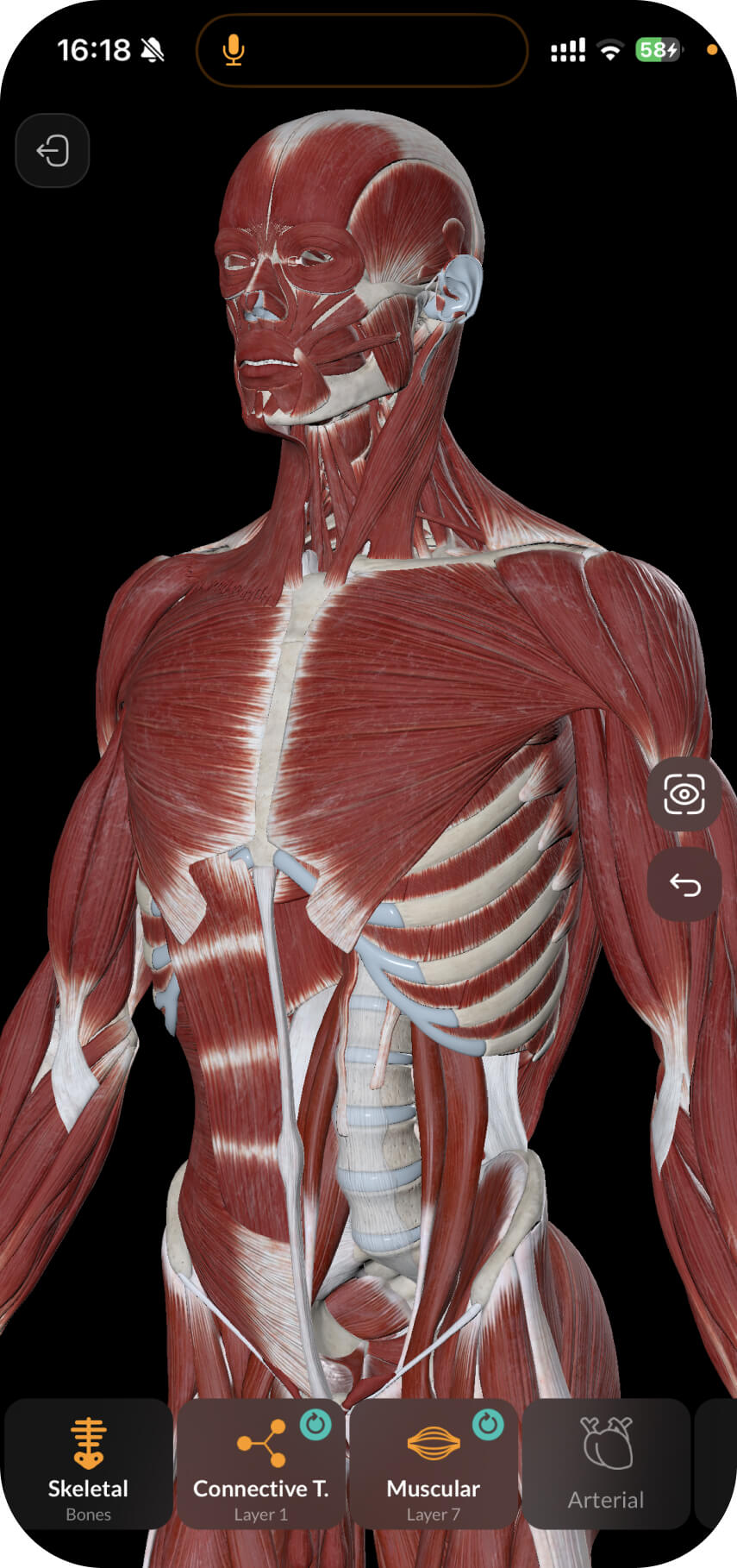The bones of the hand (ossa manus) include the carpal bones (ossa carpi), the metacarpals (ossa metacarpi), and the phalanges (phalanges/ossa digitorum).
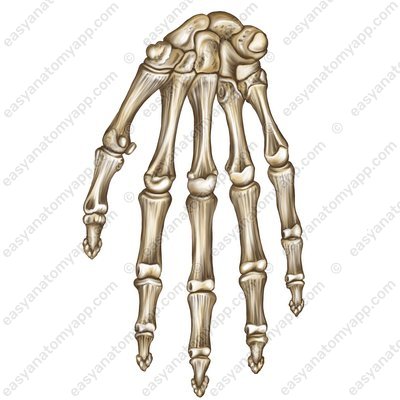
.jpg)
The metacarpus consists of five small tubular bones. Each metacarpal bone has three parts:
Base (basis ossis metacarpi)
Base (basis ossis metacarpi) 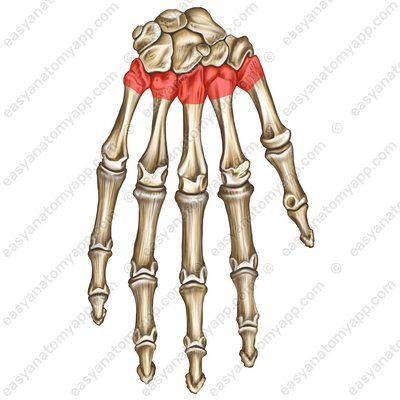
Body (corpus ossis metacarpi)
Body (corpus ossis metacarpi) 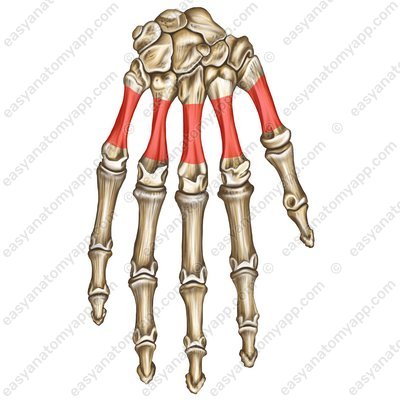
Head (caput ossis metacarpi)
Head (caput ossis metacarpi) 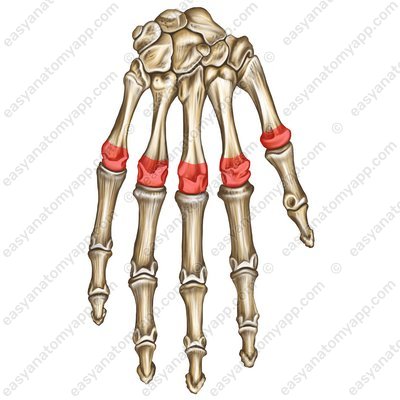
The base has an articular surface for articulation with the carpal bones, and the head has an articular surface for articulation with the proximal phalanges. Furthermore, the bases of the II-V bones also contain lateral articular surfaces that are used for articulating with each other.
The first metacarpal is slightly different from the others; it is thicker and shorter. It has an articular surface at its base to connect with the trapezium.
At the base of the third metacarpal lies a small styloid process (processus styloideus).
Styloid process (processus styloideus) 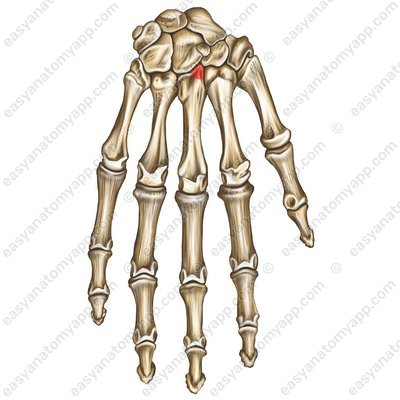
The spaces between the metacarpals are called interosseous metacarpal spaces (spatia interossea metacarpi).
Interosseous metacarpal spaces (spatia interossea metacarpi) 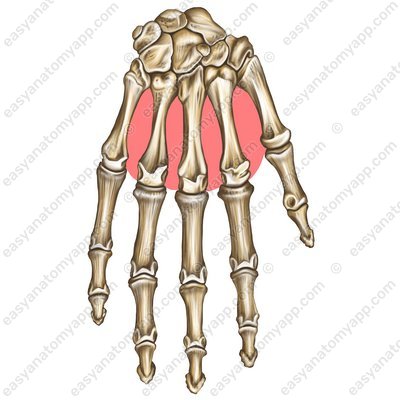
Now, we examine the phalanges (phalanges/ossa digitorum). The anatomical names of the phalanges are as follows:
I – thumb (pollex)
II – index finger (index)
III – middle finger (digitus medius)
IV – ring finger (digitus anularis)
V – little finger (digitus minimus)
Phalanges (phalanges/ossa digitorum) 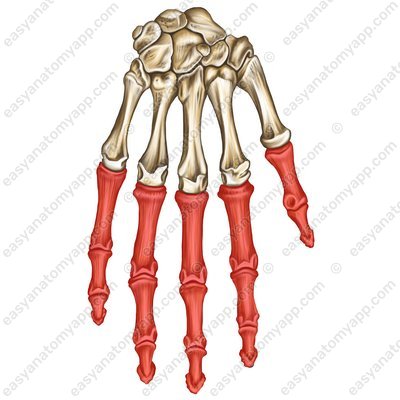
All fingers except the thumb have three phalanges:
Proximal phalanx (phalanx proximalis)
Proximal phalanx (phalanx proximalis) 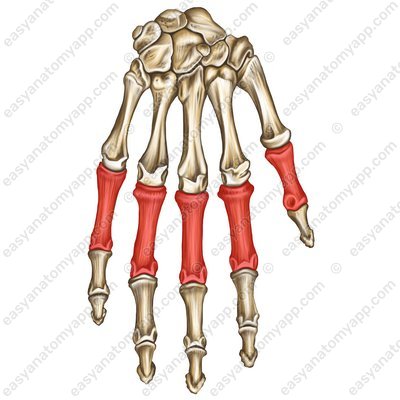
Middle phalanx (phalanx media)
Middle phalanx (phalanx media) 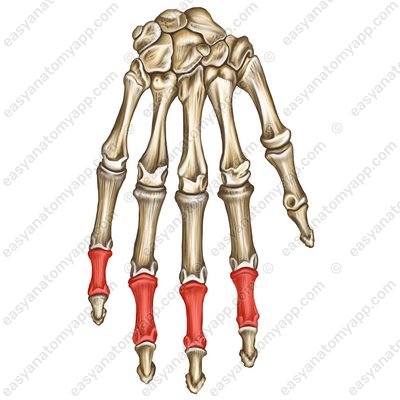
Distal phalanx (phalanx distalis)
Distal phalanx (phalanx distalis) 
The thumb has no middle phalanx.
Phalanges have three parts, just like metacarpals:
Base (basis phalangis)
Base (basis phalangis) 
Body (corpus phalangis)
Body (corpus phalangis) 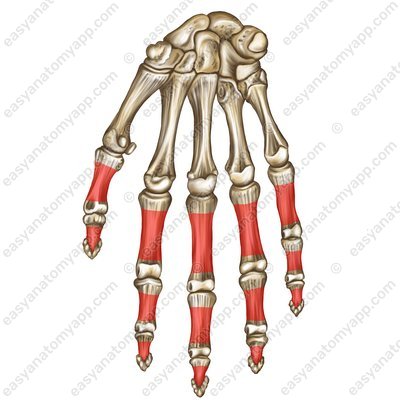
Head (caput phalangis)

The bases and heads of the phalanges have articular surfaces for articulation with other bones (depending on the phalanx—either metacarpals or another phalanx). The end sections of the distal phalanges are slightly flattened and contain a tuberosity of the distal phalanx (tuberositas phalangis distalis).
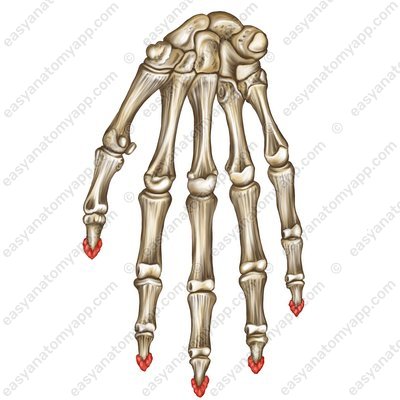
Metacarpal bones and phalanges
- bones of hand
- ossa manus
- carpal bones
- ossa carpi
- metacarpals
- ossa metacarpi
- phalanges
- ossa digitorum / phalanges
- metacarpal base
- basis ossis metacarpi
- body of metacarpals
- corpus ossis metacarpi
- head of metacarpals
- caput ossis metacarpi
- styloid process
- processus styloideus
- interosseous metacarpal spaces
- spatia interossea metacarpi
- thumb
- pollex
- index finger
- index
- middle finger
- digitus medius
- ring finger
- digitus anularis
- little finger
- digitus minimus
- proximal phalanx
- phalanx proximalis
- middle phalanx
- phalanx media
- distal phalanx
- phalanx distalis
- base of phalanx
- basis phalangis
- body of phalanx
- corpus phalangis
- head of phalanx
- caput phalangis
- tuberosity of distal phalanx
- tuberositas phalangis distalis

